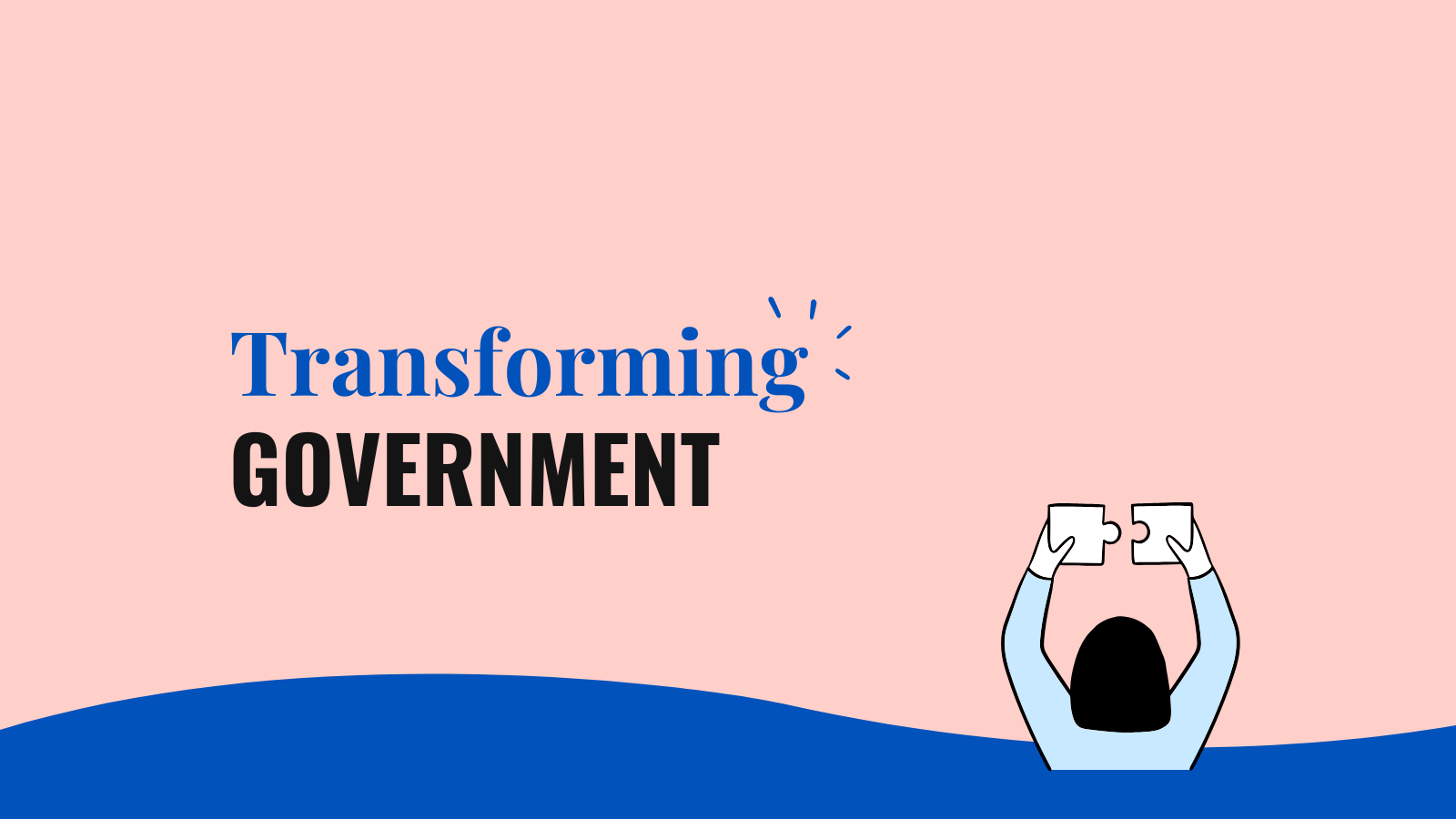When you think about governance, it may conjure up images of bureaucracy, paperwork, and endless meetings. There’s plenty of truth in this - but good governance is so much more. It’s vital for providing organisational direction and funding, making decisions, addressing people’s needs and building trust amongst stakeholders and teams.
In many government departments, delivery and governance processes have grown as structures have changed, new technologies have been developed, and new needs and risks have emerged. Over time, increasing layers of boards, checks, and approvals have led to a system that in some cases, while well-intentioned, no longer serves the people working within it. It’s created an environment where staff must navigate a maze of unclear decision-making processes, overlapping responsibilities, and information silos - delaying projects by months, draining resources, and frustrating teams who just want to get on with delivering their work.
In the context of digital, data and technology (DDaT) governance, we’ve seen many public sector organisations trying to embrace more agile ways of working and figure out what agile investment looks like. There’s a desire to empower teams, make decisions quickly, adapt to change, and keep projects moving forward while managing risk effectively. But when traditional governance structures—designed for slower, more sequential waterfall processes—are layered on top of agile methods, the result is often the opposite. And when people persevere through this maze only to fail a service assessment, the frustration is real.
In short, when governance isn’t designed intentionally, it quickly becomes a burden rather than a support system.
Taking a user centred approach
To untangle this web, user centred design (UCD) can make a real difference. UCD usually focuses on end users and how we can improve services for them. However, applying it to the needs of those who are designing services and affected by bad governance - the designers, delivery leads, SMEs and decision-makers who interact with these processes on a daily basis - can allow us to understand where the pain points lie and how we can design structures that work for, not against these people.
The first step in applying UCD to governance is research. It’s important to understand who is involved, their roles and needs. For instance, delivery managers need clarity on the checkpoints they must pass through to keep their projects on track. Decision-makers need timely and accurate information to ensure they can make the right calls without causing unnecessary delays. By understanding these needs, we can begin to see where governance is failing and where it needs to change.
One of the most valuable tools here is journey mapping. This allows us to visualise the current state of governance, identifying the points where it becomes too complex, where decisions get stuck, or where communication breaks down. By making these problems visible, we can start to develop targeted solutions that address the root causes of frustration and inefficiency.
The power UCD then brings is that, when used pragmatically, it allows organisations to become unstuck. Once we have a hypothesis about what might improve, we can implement small, manageable changes and test their impact. This allows us to see what works and what doesn’t, making continual improvements that gradually build towards a more effective system.
Making an impact with UCD
We’ve worked with public sector clients who have faced complex, interlinked challenges, such as multiple governance boards hindering processes and staff struggling to find the information they need. By taking a user centred approach to addressing these issues, we’ve helped make big changes and learned some important lessons from these projects:
-
Don't be afraid to start small, and concrete. Tangible things may seem minor, like improving governance information to make it easier for staff to navigate which removes immediate pain points from the system, but they can make a huge difference.
-
Look towards technology to work smarter, not harder. Explore the potential for systems and tools to do the work for staff. For example, artificial intelligence has the potential to reduce the need for staff to input information into different documents, or spot patterns where projects regularly aren't meeting aspects of the Government Digital Standard so that training and support can be targeted in those areas.
-
Getting into governance will lead you to uncomfortable conversations. At some point, they need to be met head-on. People want to add the most value to their work. It's why most are in the civil service, to make a difference. But sitting around the board table with dozens of others, trying to get through a stack of project governance, isn't making the difference they need and want. It's also not user centred because the layers of governance aren't helping people be efficient or make decisions clear. Needing to have these conversations is never easy, but leaders must work with their teams to imagine how things could be different.
Building governance that enables progress
Governance is essential, but when it becomes overly complex it can stall the very progress it’s meant to support. By applying user centred design principles, we have the opportunity to rethink governance, making it more effective and empowering for those who have to navigate it.
Even small, targeted changes can have a positive impact. By designing governance intentionally for our internal users, we can create structures that work for all and build better digital services for society.
Mica Moore and Defra’s Lynne Roberts will be discussing UCD in governance at Service Design in Government (SDinGov) on the 20th of September, where we are a platinum sponsor! Find out more at: https://govservicedesign.net/

Transforming Government
We partner with the institutions of Government to help them work better. Our approach delivers digital transformation in government that is user-centred, data-led and cost-effective.
Work with usOur recent insights
Transformation is for everyone. We love sharing our thoughts, approaches, learning and research all gained from the work we do.

Budget 2025 reveals how digital funding really works
Background: The Budget was announced yesterday, it’s not announcing big new programmes of work - it’s fine tuning how the government's fiscal policy supports existing policy objectives. There’s takeaways for all digital leaders from this announcement and some thoughts about that to do next.
Read more
Unlocking the benefits of AI for charities
How human-AI collaboration can help charities get true value from their data, turning insights into impact.
Read more
What's the future for open data in the UK?
A decade ago, the UK was a leader in open data, but its prominence has faded. We examine why the focus has shifted and what the future holds for the role of open data in the public sector.
Read more

